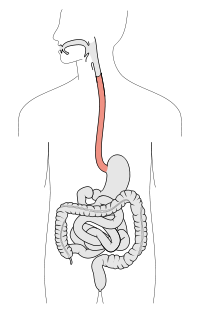
Photo from wikipedia
OBJECTIVES We aimed to provide an overview of the available literature that includes both objective assessments (namely hypersalivation and hyposalivation) and the subjective experience (namely xerostomia and drooling) of salivary… Click to show full abstract
OBJECTIVES We aimed to provide an overview of the available literature that includes both objective assessments (namely hypersalivation and hyposalivation) and the subjective experience (namely xerostomia and drooling) of salivary problems in patients with Parkinson's disease. BACKGROUND In patients with Parkinson's disease, there may be complaints of salivary problems such as xerostomia or drooling. This can have consequences for their oral health and quality of life. To date, systematic reviews have focused on drooling only. MATERIALS AND METHODS A literature search in 4 databases was performed up to 12 February 2021. Two researchers independently assessed studies for eligibility. RESULTS In total, 63 studies were included. The prevalence of self-reported xerostomia ranged from 49% to 77%, and that of self-reported drooling ranged from 5% to 80%. Ten articles reported a significantly lower mean salivary flow in patients with Parkinson's disease than in controls. None of the articles with both a control group and a patient group reported a significantly higher salivary flow in patients with Parkinson's disease. When questioned about subjective salivary problems, a significantly higher prevalence of both xerostomia (7 studies) and drooling (14 studies) was found in patients with Parkinson's disease than in controls. Patients with Parkinson's disease have a lower salivary flow rate and higher prevalence of both xerostomia and drooling than controls. CONCLUSION The complexity of salivary problems present in patients with Parkinson's disease necessitates a multidisciplinary approach in order to avoid mutually counteracting treatments from different healthcare professionals.
Journal Title: Gerodontology
Year Published: 2022
Link to full text (if available)
Share on Social Media: Sign Up to like & get
recommendations!